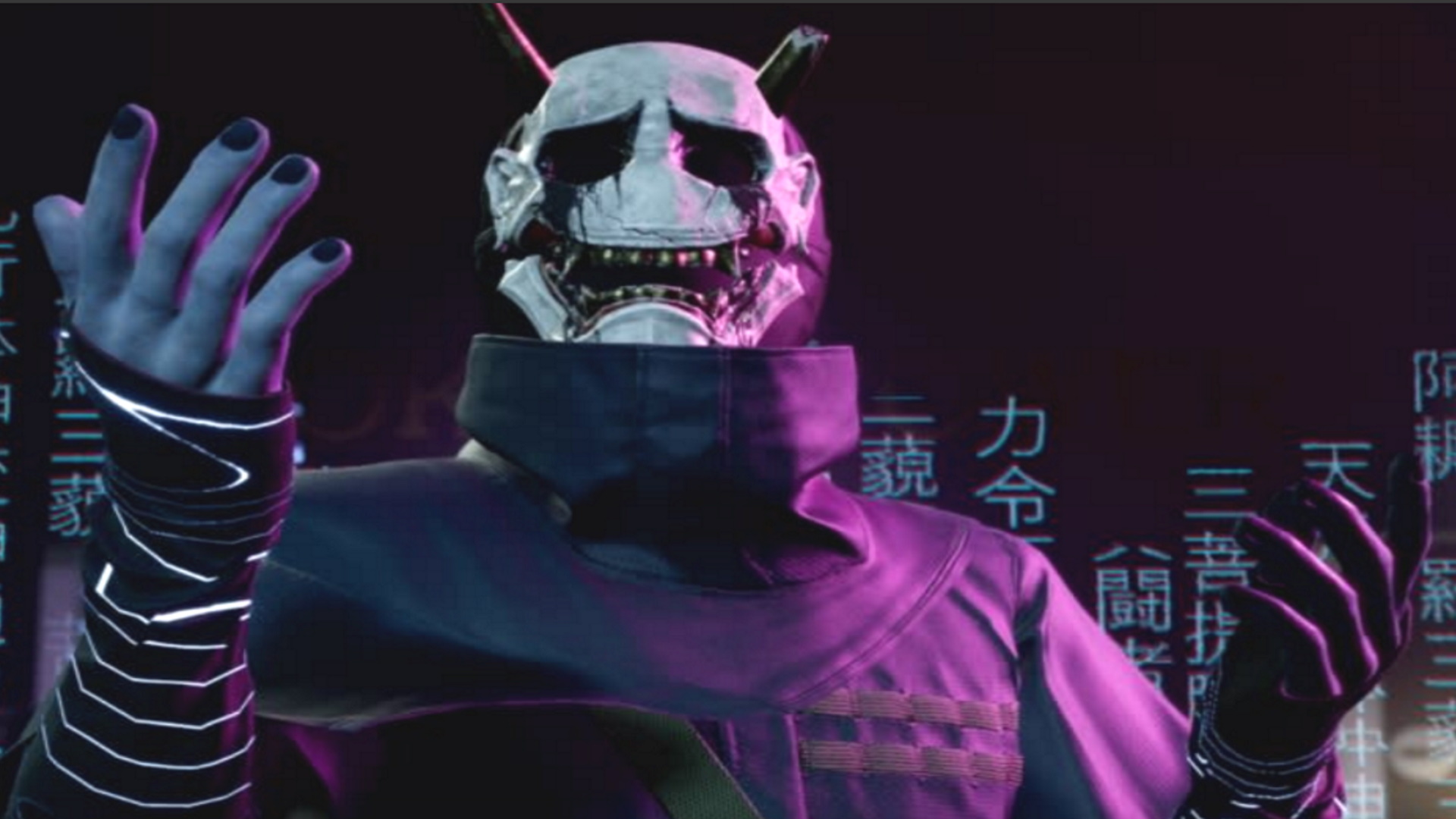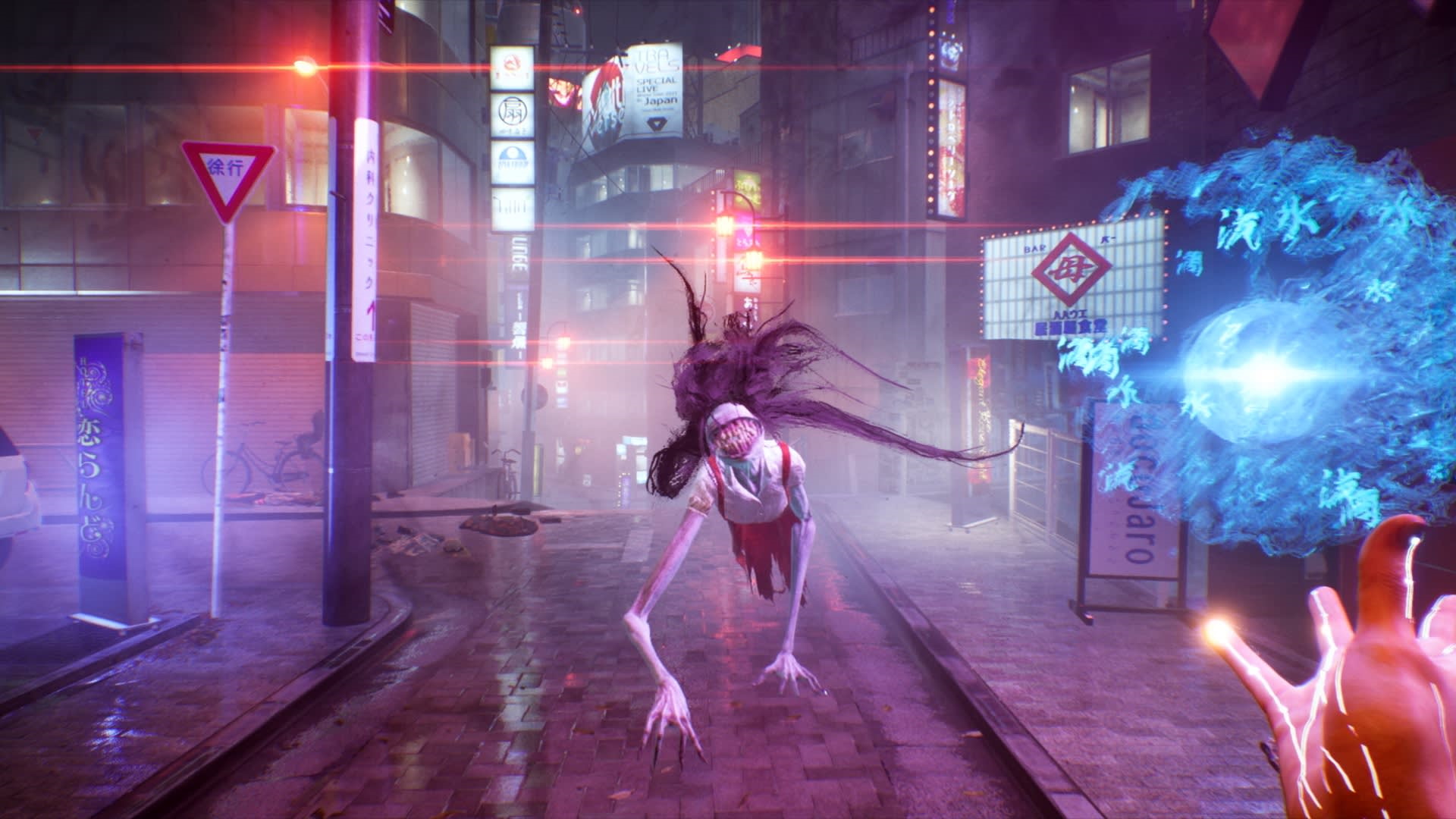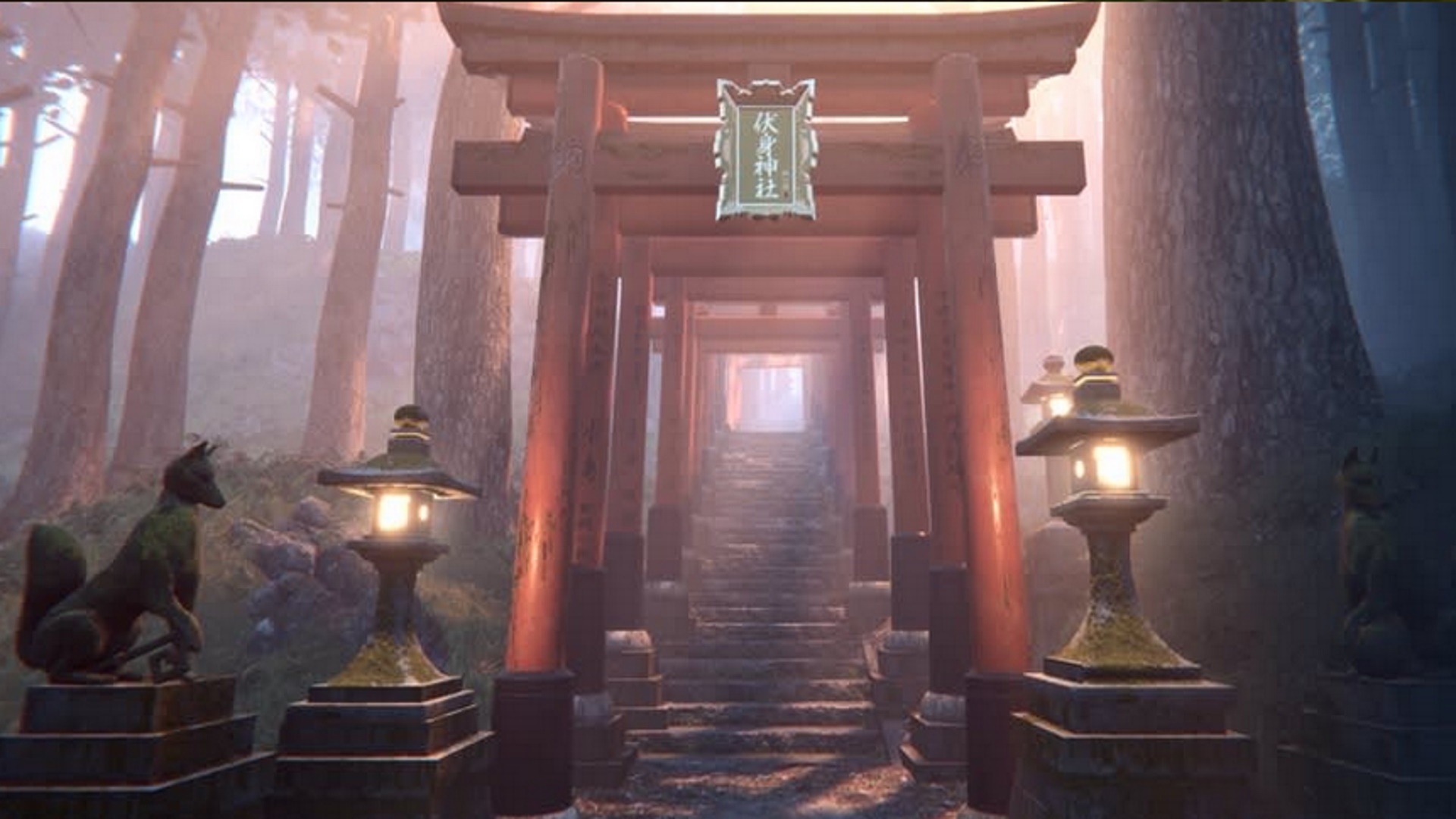I met a Shiba Inu when I visited Shibuya, and gave them a treat. In return, the friendly pup showed me a secret (buried in concrete no less), which was far nicer than the welcome I received from the city’s other visitors. Harassed salary workers dogged my steps, lost schoolgirls heckled me at every turn, and housewives lobbed projectiles at me when I passed by.
They also all wanted to send my soul to the underworld where it would suffer eternal torment and/or be “saved” by a masked murderer – it could go either way – because these visitors are capital-V Visitors in Ghostwire Tokyo, evil spirits born from the pent-up negative emotions of everyday people.
I’ve played the first two chapters of Ghostwire, and while the story beats and gameplay segments in these chapters is mostly what Bethesda showed us a few months ago, I was surprised how fresh and exciting they still feel – and how empty Shibuya is outside the main story.
Hannya is behind the mysterious fog engulfing the city, pulling souls from their bodies and opening the door to the Visitors, who now stalk the streets of Shibuya in place of all the humans – all except one. That’s you, Akito, joined by the soul of KK, a former police officer-slash-ghost hunter who invades your body and seeks revenge on Hannya.
Akito has several goals: cleansing the fog, finding lost spirits, and eventually dealing with Hannya. There’s no shortage of spirits to save, with the total maxing out at a whopping 200,000+, an initially intimidating number before you realize each cluster gives you at least 90 or more of the spectral remnants each time. Cleansing torii gates purifies the city, unlocking new areas with more spirits, challenges, and Visitors.
It’s a bit too formulaic at times, though Ghostwire makes up for it with personality. Akito’s relationship with KK is predictable in the opening hours – the reluctant young hothead playing sidekick to the grizzled hero. It’s still well-executed so far, though, and I’m invested in finding out how KK ended up in his current form.
Nekomata man (cat?) the shops and stalls, selling everything from canned goods and Yakuza Puffs to lucky talismans and even some of KK’s old case notes. Best of all, for me at least, is that the writers and localizers went all-in on every item and collectible.
Wondering why this curious snack food is called Yakuza Puffs? Good news: there’s a detailed reason in the item description. That’s not even going into some of the bizarre and sometimes poignant requests some lingering spirits have for you.
The world feels rich and interesting, which makes its relative lack of depth so far all the more disappointing. Tango’s vision of Shibuya is an absolutely gorgeous one, but it’s also pretty empty. You find most of the interesting items as part of the main story in the first two chapters, and the city’s many alleyways and heart-stopping heights usually just hide more spirits.
You’re barred from entering most buildings. It makes sense, considering everyone’s on the verge of eternal torture anyway, but it still puts a damper on the sense of discovery and makes the setting feel a bit duller than I expected.
Combat and Akito’s skill system just start getting interesting at the end of chapter two, so it’s still too early to get a feel for these. However much I might wish Shibuya had more to offer, I’m enjoying my time with Ghostwire Tokyo immensely and can’t wait to see how it unfolds from here. Look forward to a full review later in March.
[Note: Bethesda provided the copy of Ghostwire: Tokyo used for this preview.]









Published: Mar 13, 2022 04:04 pm